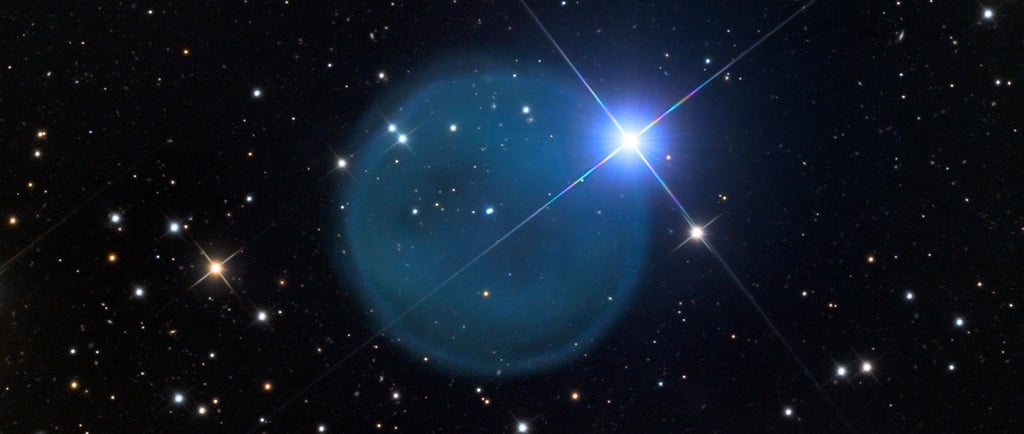Abell 33: The Diamond Ring Nebula


An Overview of Abell 33
Abell 33, commonly known as the Diamond Ring Nebula, is a stunning and faint spherical planetary nebula located approximately 2,700 light years away in the constellation of Hydra. This astronomical gem offers a captivating glimpse into the life cycle of stars, showcasing the fascinating phenomenon of planetary nebulae and their importance in the cosmos. The nebula was cataloged by the astronomer George Abell in 1955, and it continues to intrigue both amateur and professional astronomers today.
Characteristics of the Diamond Ring Nebula
The Diamond Ring Nebula stands out due to its bright central star, which is often perceived as the 'diamond' in this cosmic imagery. This central star, a white dwarf, is the remnant core of a star that has exhausted its nuclear fuel and expelled its outer layers. The remaining gases create a shell-like structure, illustrating the complex interplay of stellar evolution. The spherical shape of Abell 33 is emblematic of many planetary nebulae, which often exhibit similar geometries as they expand into the vastness of space.
Observation and Significance
Observing Abell 33 requires a telescope due to its faintness, but dedicated stargazers can appreciate its beauty with the right equipment. Located in Hydra, this nebula can be viewed during specific times of the year when the constellation is prominent in the night sky. The study of Abell 33 not only enriches our understanding of nebulae dynamics but also contributes to broader astrophysical phenomena, such as the distribution of elements in the universe. Planetary nebulae like Abell 33 play a crucial role in the recycling of stellar material, enriching the interstellar medium with heavy elements that may eventually contribute to future star formation.
In conclusion, Abell 33, or the Diamond Ring Nebula, is a remarkable celestial object that captures the imagination of astronomers and space enthusiasts alike. Its distinct features and fascinating formation process make it a subject of ongoing research and exploration in the field of astrophysics. As our understanding of such nebulas expands, so too does our appreciation for the intricate tapestry of the cosmos, revealing the beauty inherent in its many mysteries.
